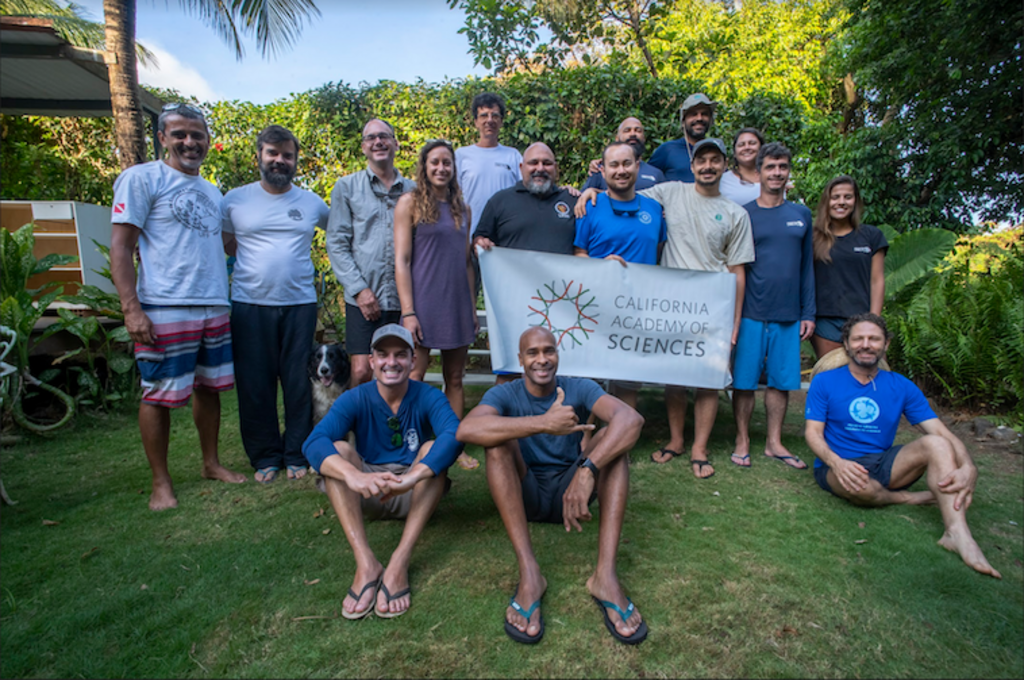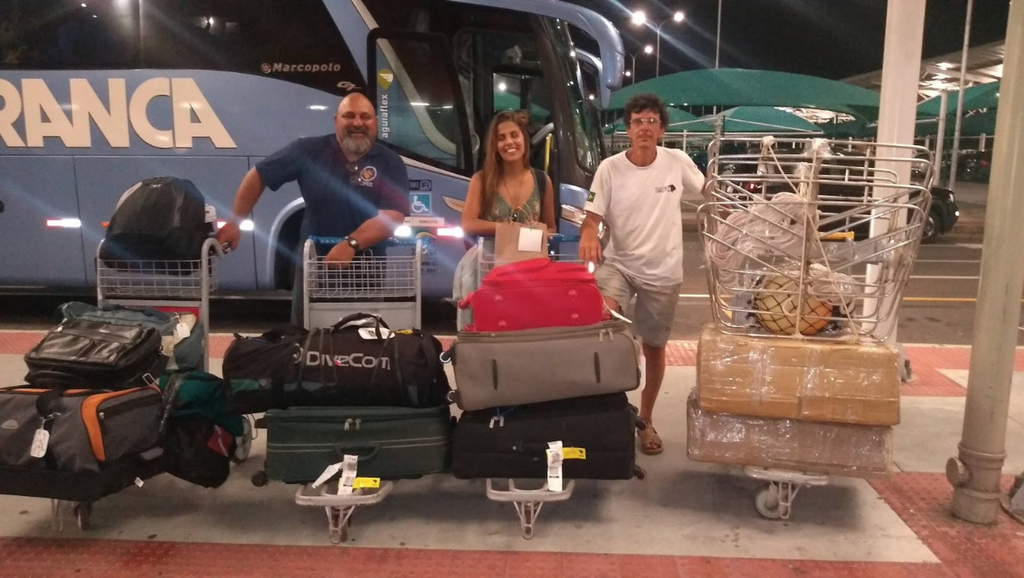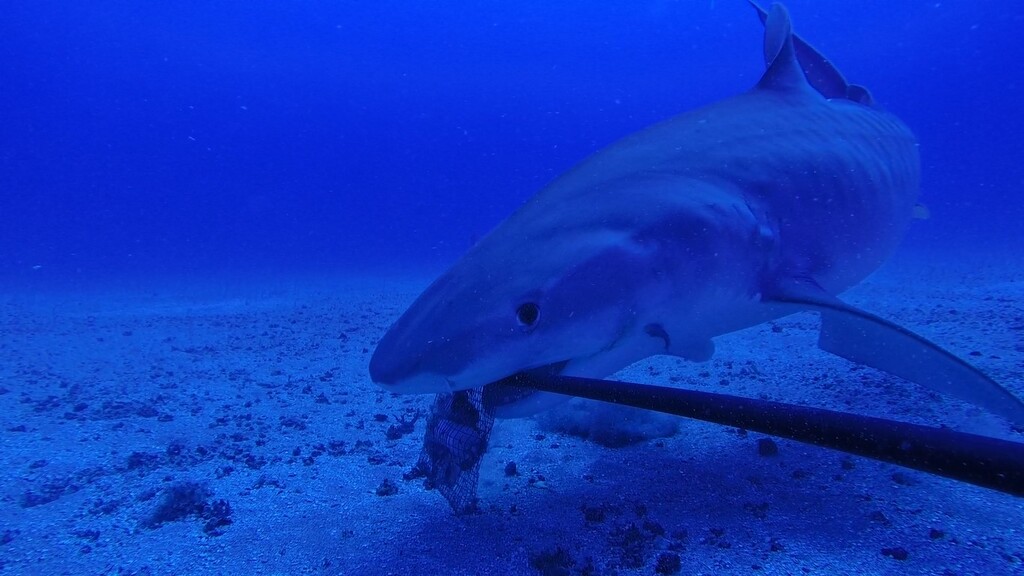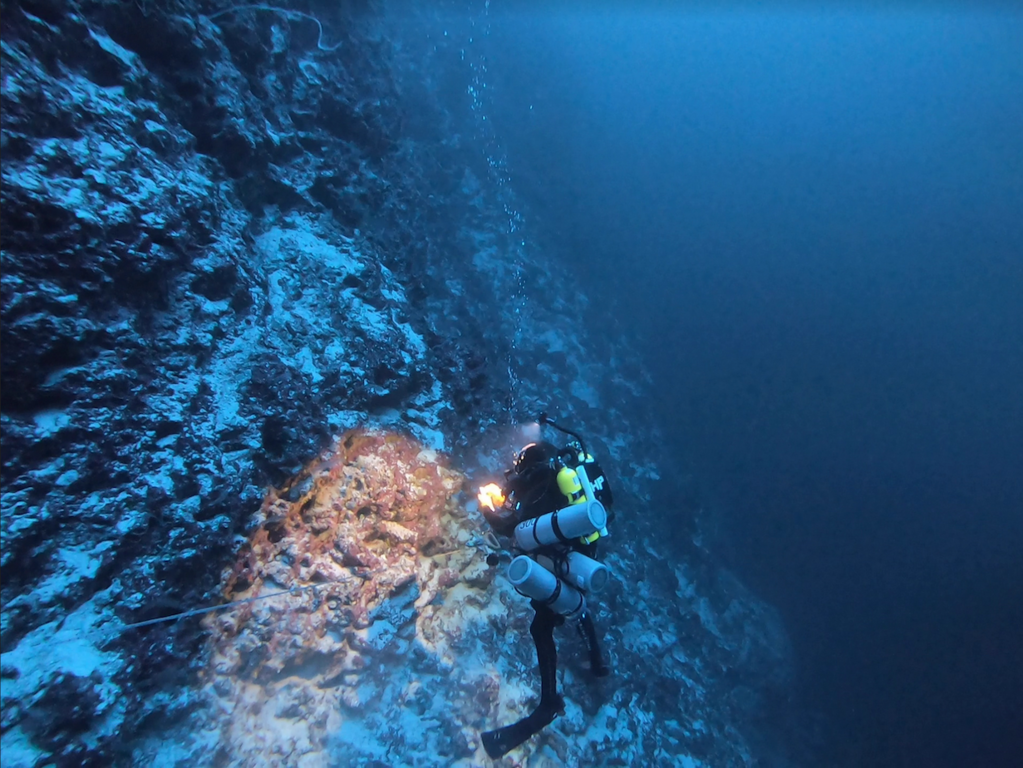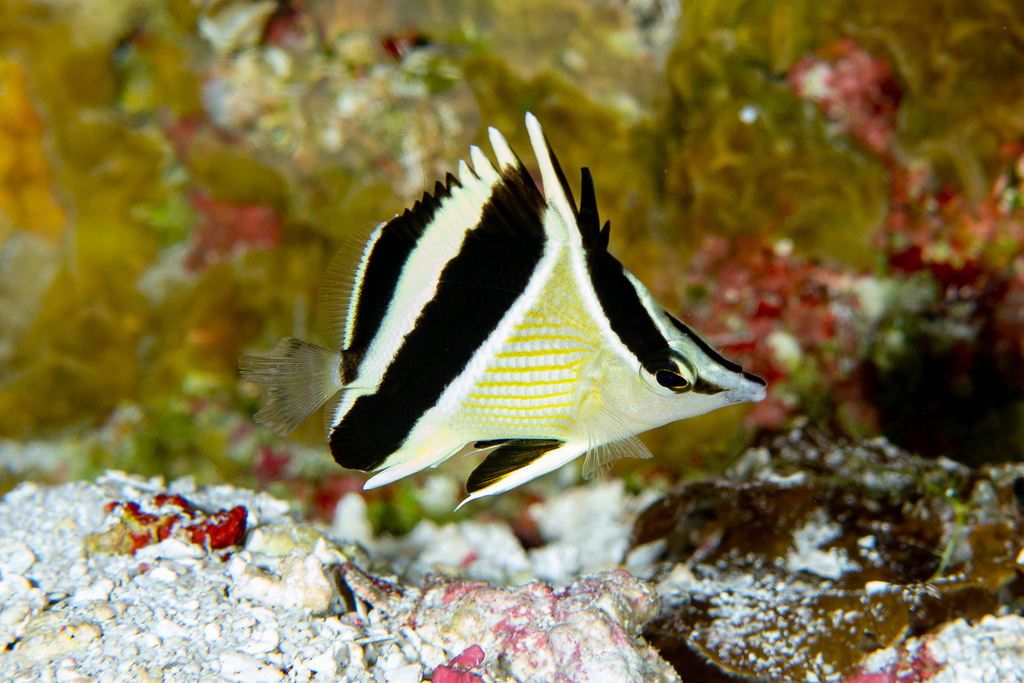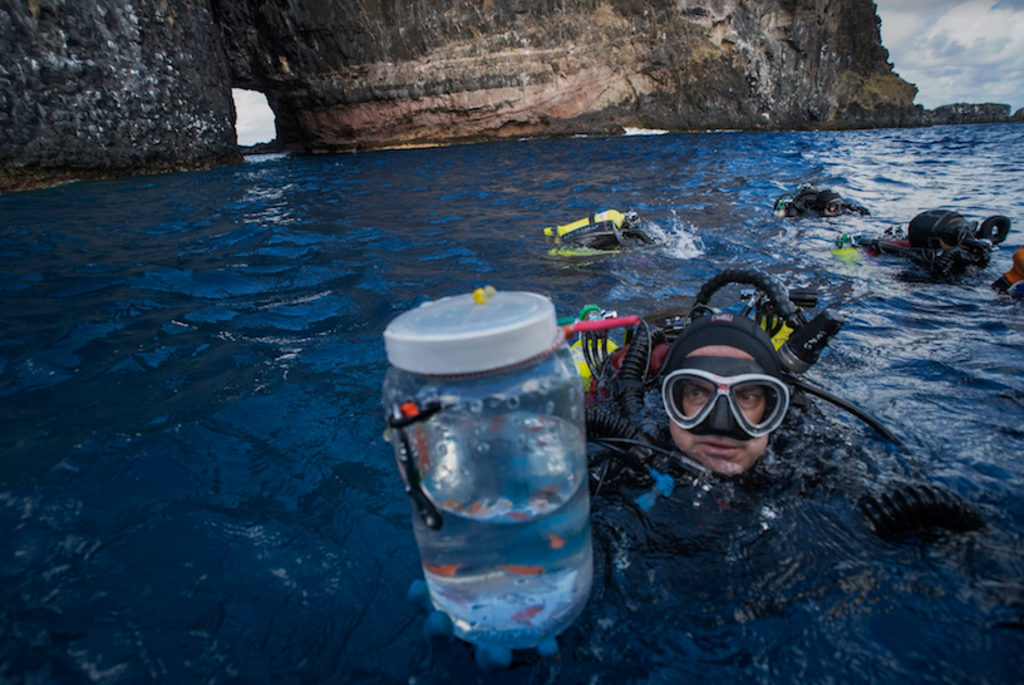Behind the science:
Mesophotic ecosystems at Fernando de Noronha Archipelago, Brazil (S...
2020, December 17
Posted by Veronica Radice
“Mesophotic fish diversity of Fernando de Noronha Archipelago”
What was the most challenging aspect of your study (can be anything from field, lab to analysis)?
On our expedition to the Fernando de Noronha Archipelago, we were 16 researchers, divided into three teams: the rebreather deep diving team, the shallow SCUBA dive team, and the BRUVS/ROV filming team. The most challenging aspect was the bureaucracy related to conducting research in a Brazilian National Marine Park, which became even harder due to the participation of non-Brazilians in our team. Hudson Pinheiro and I started the legal procedures for requesting authorizations and tax exemptions approximately six months before the expedition. Another very complicated aspect was the logistics to ship in advance and bring with us all the necessary equipment to Noronha. Most of the filming equipment (BRUVS / ROV) was shipped beforehand, and all the equipment for deep diving (rebreathers) went with us directly from California to Noronha. Flying with this much luggage was really insane and chaotic, but amazingly not a single bag was lost. Surprisingly, organizing all the teams in order to carry out the actual work successfully and safely was not so hard.
What was the most memorable moment in undertaking this study?
In my opinion, there were two memorable moments during the expedition. The first was the discovery of Tosanoides sp., a probable new species related to the Aphrodite Anthias (Tosanoides aphrodite) from Saint Paul's Rocks, and a fish of unique beauty. A second spectacular moment was the record of a huge tiger shark, which literally took off the BRUVS bait, giving us a show in front of the cameras.
What was your favorite research site in this study and why?
I am not sure about my favorite site, but I think that the mesophotic patch reefs at the middle mesophotic zone and the steep wall at the lower mesophotic zone were the most formidable ecosystems explored. These were the most diverse ecosystems and with higher number of new records and new species.
Other than your co-authors, with whom would you like to share credit for this work?
This work would not have been done without the collaboration of several friends and partners. We are very grateful to the funding agencies and the research institutions that sponsored and allowed us to carry out this work, especially the NGO Voz da Natureza for supporting the project, and the Boticário Group Foundation for Nature Protection and Hope for Reefs initiative (California Academy of Sciences) for funding. We would also like to thank everyone who collaborated in any way with this work, whether in the field, in the laboratory or even at a distance: Mauricio Vilella and the staff from Pizzaria Namoita who hosted us in the island; Patrick Muller, Ismael Escote and the team of Atlantis Divers who organized logistics for the rebreather dives; Raphael M. Macieira, Mauritius V. Bell, Allison Shafer, Zaira Matheus, Kathiani V. Bastos, Helder Guabiroba, Cristina Castillo, José Carlos Marenga, Alexandre Carvalho and the crew of the vessel Capitania I for logistical support; Gabriel Cardozo-Ferreira, Alfredo Carvalho-Filho and Luke Tornabene for helping us identify some unknown fishes. The Fernando de Noronha Marine National Park team was essential, as well as the Administration of Fernando de Noronha (ATDEFN), the Brazilian Environmental Agency (ICMBio), Universidade Federal do Espíriro Santo, and Conselho Nacional de Desenvolvimento Científico e Tecnológico (CNPq).
Any important lessons learned (through mistakes, experience or methodological advances)?
We always learn many lessons in this kind of expedition with the participation of lots of people. We learned mainly to work better as a team and that we always must to be more patient, as prolonged coexistence can be complicated. I take this space to apologize for my moments of little patience and stress with team members.
Can we expect any follow-up on this work?
Yes, for sure! We will start to prepare another manuscript soon, about the community structure of the mesophotic fishes, integrating all methodologies: visual censuses and collections realized during the rebreather deep dives, and videos filmed with ROV and BRUVS. In addition, we are conducting genetic analyses in tissue samples of different species, to identify whether they are new species and to describe them. That is, we will have news soon.
Featured article:
|
|
Mesophotic ecosystems at Fernando de Noronha Archipelago, Brazil (South-western Atlantic), reveal unique ichthyofauna and need for conservation | article Pimentel CR, Rocha LA, Shepherd B, Phelps TAY, Joyeux JC, Martins AS, Stein CE, Teixeira JB, Gasparini JL, Reis-Filho JA, Garla RC, Francini-Filho RB, Delfino SDT, Mello TJ, Giarrizzo T, Pinheiro HT (2020) Neotrop Ichthyol 18:e200050 |
|
